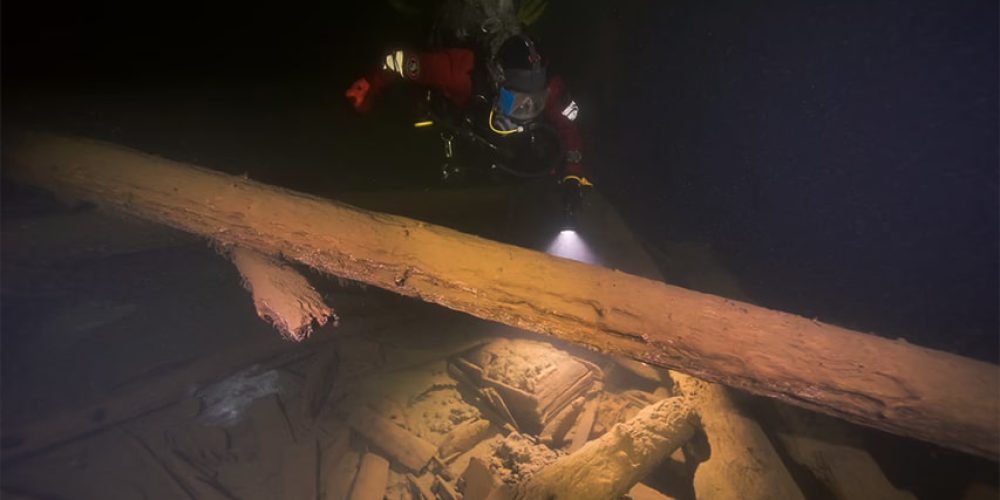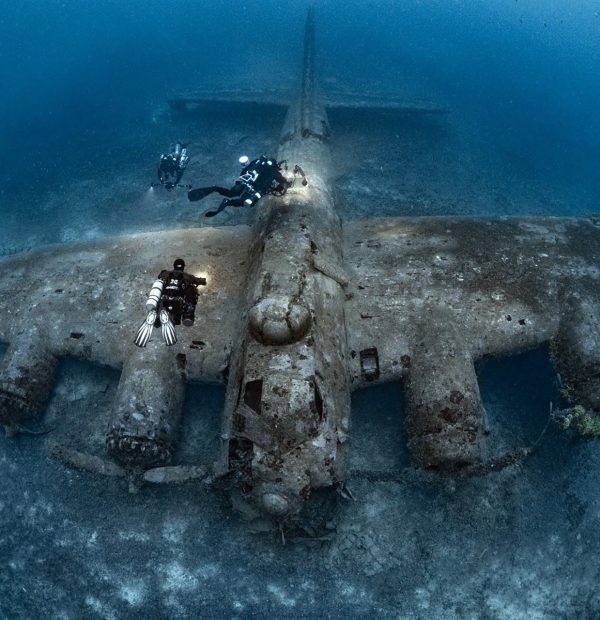Tuesday, 23 April 2024
Menu

In the Baltic Sea, north of Dalarö located in the Stockholm Archipelago, at a depth of just 28 metres, archaeologists from Sweden have discovered a unique treasure from the region’s commercial past. On a wooden wreck, researchers located a large cargo of a special iron called osmium.

A copper pot is still stuck in the brick fireplace. There are also ropes, as thick as a grown man’s forearm, which are almost intact. These organic things cannot be found on land, because they have long since rotted away – Jim Hansson, project manager and marine archaeologist, describes the underwater discovery.
The conditions in the Baltic Sea create a unique mixture. It has allowed many wooden ships and vessels with their cargoes to be preserved almost unchanged until our times. And with today’s possibilities to explore, research and document these finds, we have a real chance to not only get to know their historybut also to preserve it for future generations.
High-quality photographs, films or 3D models created by means of photogrammetry are tools that until recently could only be dreamt of. Objects captured by these means will forever remain preserved in an unchanged form. They will also contribute to many studies without the need for diving and will make it possible to follow the process of degradation of individual wrecks over the years.
None of my professional colleagues, both in Sweden and abroad, have ever seen such a well-preserved ship – said Jim Hansson.
Osmunds are pieces of iron weighing around 300 grams. At first glance, they may not seem particularly valuable or exciting like warships full of guns or galleons with gold and jewels. However, as it turns out, for some, Osmund iron is worth much more than gold.
Although it has been an important commodity for centuries, very little of it survives in Sweden. According to available information, a total of perhaps half a barrel could be collected. However, the wreck under investigation has already yielded around twenty barrels, and there is still potential for more.

The Baltic Sea is a combination of not too salty water, low temperatures, darkness, lack of ship’s augers and low oxygen content, which means that much material can be preserved in almost perfect condition. The grotmast on the wreck is still standing and waiting for divers at around ten metres depth.
In addition to the osmium, there are barrels in the hold where butter has probably been found, fish remains and elk or deer horns. In the cabin, on the other hand, there are personal belongings of the sailors, such as shoes and small objects that give a glimpse of life on board and what Swedish exports were like more than 500 years ago.

As it turns out, it is not only the contents of the hold that arouse emotions. The wreck itself is also a rather unusual and mysterious discovery. The researchers do not know what type of ship it is, as they have never come across a similar vessel before.
The specialists managed to establish that the ship was built from pine, which originated in eastern Sweden and was felled in the 1540s. The researchers also discovered that at some point the ship was repaired with pine from Finland. The barrels that the divers discovered on board, on the other hand, came from the Baltic countries and, like the ship, were made in the 1540s.

A shadow of hope is offered by archaeologists finding trademarks that may lead to the owner of the cargo. No doubt this would provide more information about the ship. And who knows? Maybe even establish the name of the vessel. So far, researchers have found three lids with the same marking. However, it is not known whether this is a trademark, a trade name or something else.

This unusual wreck was accidentally discovered in 2017 by a diver who was looking for the wreck of another vessel. However, it took some time before researchers tackled the wreck with more interest. Unfortunately, in the meantime, the wreck was discovered by looters, who took several artefacts from it in the first half of 2019.
According to project manager Jim Hansson, these were most likely foreign divers who noticed the archaeologists’ activities in the area. Fortunately, the wreck now has much better protection. The area where it rests on the bottom is under the special care of the Swedish Coast Guard.










Welcome to DIVERS24.COM, your daily source of scuba news, freediving, scuba diving information, and equipment reviews. Our comprehensive coverage of the dive industry from A to Z provides you with all the latest scuba news, training updates, underwater photography tips, and everything else related to scuba diving. Whether you’re a beginner or an experienced diver looking for more knowledge about scuba gear or techniques – we’ve got it covered! With our in-depth articles written by experienced divers who have been there and done that, you are sure to find exactly what you need here at Divers24.com. Dive into scuba news today!
Underwater Media Sp. z o.o.
Szafarnia 11/F8,
80-755 Gdansk, Poland
Welcome to DIVERS24.COM, your daily source of scuba news, freediving, and scuba diving information. Sign in for a weekly news update and discount coupons for dive gear and apparel.
@2023 - underwatermedia.pl. All Right Reserved. Designed and Developed by Tworzenie stron internetowych Gdansk

The Divers24 portal is currently the largest online medium treating diving in Poland. Since 2010 we have been providing interesting and important information from Poland and around the world on all forms of diving and related activities.
Contact us: info@divers24.com